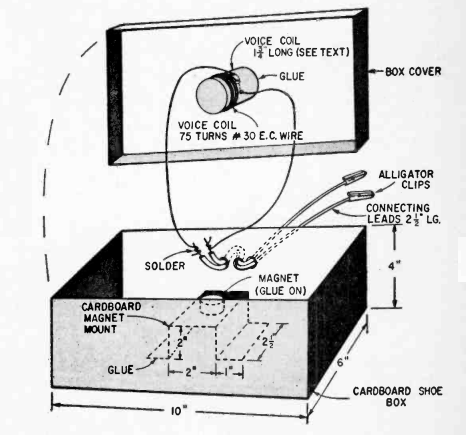The young scientist or engineer looking for a relatively simple but interesting project for the science fair could construct the homemade permanent-magnet speaker shown here. It appeared fifty years ago this month in the October-November 1966 issue of Radio-TV Experimenter.
The speaker is constructed inside a cardboard box, which also serves as the sounding board (which the article incorrectly calls a “cone,” which it would be in a normal speaker).
The only other components, aside from a few pieces of cardboard and glue, consist of a permanent magnet and wire. Just as in a commercially manufactured speaker, a coil of is mounted on a form surrounding the magnet. When an audio signal is applied to the coil, it and the top of the box are made to vibrate.
The 1965 plans call for a magnet from a burnt out speaker, and this would still be a possibility. These days, a more prolific source of powerful magnets would be from the drives of defunct computers, as shown in this video:
Suitable magnets are also available from Amazon or many other sources. These plans call for a coil of 75 turns of 30-gauge enamel wire, although the exact wire size is not critical. The original plans call for using the speaker with a radio or television. The simplest way to make the connection to a modern radio or MP3 player would be through the headphone jack. Another option would be to use an inexpensive audio amplifier such as the one shown below:
The use of an audio amplifier would also allow the use of a homemade microphone, such as one of those shown in an earlier post. And for another somewhat more complex homemade speaker (or microphone), see this post.
Click Here For Today’s Ripley’s Believe It Or Not Cartoon
![]()

